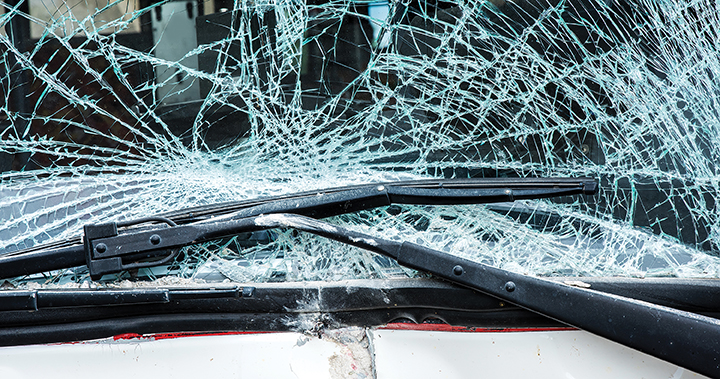
Buses are prone to a great deal of wear and tear from driving for thousands of miles on roadways in different climates and temperatures. Frequent maintenance is vital to maintaining an aging fleet and preventing malfunctions and breakdowns. In addition, buses benefit greatly from midlife refurbishment at six to eight years due to the extreme duty cycle they operate in.
At a transit bus’s midlife (years 6-8) the major components begin to increase in maintenance costs as well as possibly reaching the end of life, while the bus structure typically has significant life remaining. Consequently, upgrading or replacing major components is an effective way of allowing a transit bus to fulfill its 12-year (or greater) life.
Further, new technology can be implemented in replacing major components that may not have been in place or available when the bus was new. This allows for optimized efficiencies for transit maintenance and operations to further improve the riding experience for customers.
Refurbished buses are also easier to maintain since parts and trained technicians are immediately available. Because the bus platform does not change, an operator’s parts departments will already stock what is used for routine maintenance. By refurbishing a bus that is currently operating in the fleet, agencies also eliminate the need for extensive training for drivers and maintenance staff learn how to maintain a new vehicle. Further, the timeframe for a bus refurbishment is months vs years thereby allowing agencies to place buses back into service more quickly.
The time needed for a remanufacture depends on the scope of work involved. The refurbishment process addresses any structural, mechanical, and cosmetic issues. Most midlife refurbishments involve complete major system overhauls and replacement of critical components. Due to the extensive amount of work involved, an agency should find an experienced company specializing in remanufacturing, rehabilitation, and repowering. The company should also have skilled craftspeople and certified technicians using the proper equipment to ensure a thorough and high-quality refurbishment.
What is the biggest development of the past few years regarding bus refurbishment, or vehicle remanufacturing? How did it specifically impact end-users?
The biggest development over the past few years has been the ability to take previously used, internal combustion engine buses and remanufacture them into like-new vehicles containing Zero Emission Propulsion System (ZEPS) all-electric drivetrain systems.
The process entails dismantling the bus down to the chassis to replace the former diesel engine and transmission with a permanent magnet synchronous motor. This provides maximum torque at the start and a smooth acceleration profile. Other steps include installing all-new mechanical parts, new composite floorboards, lightweight seating, electric air compressors and power steering pumps, an electric HVAC system, all LED interior and exterior lighting, paint and graphics, suspension, steering components, and brakes.
ZEPS is a product available from Complete Coach Works and offers a clean, cost-effective, and viable alternative to fossil fuel for customers. Agencies can opt to purchase newly refurbished buses from Complete Coach Works’ sister company Transit Sales International or have their existing fleet converted to all electric.
ZEPS is revolutionizing the transportation industry by using advanced lithium-ion batteries and liquid-cooled, all-electric drive systems. For transit agencies, the unmatched performance of ZEPS provides the extended range their vehicles need on a single charge.
What is the “damage threshold” for outsourcing collision repair work versus conducting it in-house and how can outsourcing collision repair save operators money?
Any damage outside of standard routine maintenance and inspection should be considered for outsourcing. Often third-party specialists can provide a more cost-effective repair solution versus having the work performed in-house. These entities have the manpower, skill, processes and tools in place to complete repair work quickly and efficiently. Often, in-house repairs drive up costs as staff are pulled away from their standard maintenance work. A loss of valuable bay space will add to the cost depending upon the amount of time it takes to complete the repair. In addition, agencies may not have the proper equipment or parts inventory to handle the repair. Parts procurement that are not normally housed in inventory take a lot of administrative resources, which result in significant downtime.
From a damage threshold perspective this will depend on each individual property but any repair that will keep the bus out of service for over a week; require parts replacement, bodywork and paint; an have costs exceeding $10,000 – $15,000 should be considered for outsourcing.
Outsourcing can help operators achieve significant cost savings with on-hand trained specialists and appropriate tooling to handle repairs quickly. With streamlined processes, parts inventory immediately available, and physical capacity, manufacturers are properly equipped to handle multiple repairs. Experienced and specialized technicians can also repair unforeseen damage that may have occurred during a collision. Thus, outsourcing can relieve agencies from the burden of collision repair and is the most economical approach for optimum efficiency and safety.
Outsourcing can reduce road safety risks as certified experts are properly equipped to handle unforeseen damage that may be uncovered during a repair. Outsourcing is the most economical approach for optimum efficiency and safety.
What do operators need to understand about insurance companies, costs, and major collision work?
Often collision repair work requires interaction with insurance companies. Insurance companies should be viewed as valuable and equal partners in order to ensure the highest quality repair. Often insurance companies attempt to follow the path of lowest cost in approving repair work. Insurance companies are sometimes ill equipped to accurately assess repairs for transit bus damage. While quick and inexpensive repairs may appear desirable, they may not always result in the best outcome. This is where an experienced collision repair expert is needed who can properly assess and price out vehicle damage. Further, unforeseen damage is often uncovered during the tear down phase of a repair and an experienced repair expert can make accommodation for these items and identify them appropriately for the insurance companies.
Patrick Scully is chief commercial officer for Complete Coach Works. Visit www.completecoach.com for more information.
